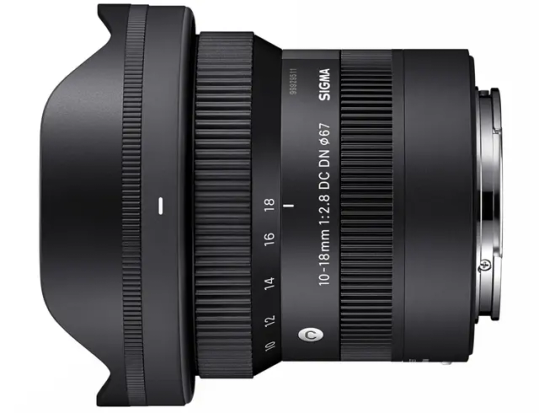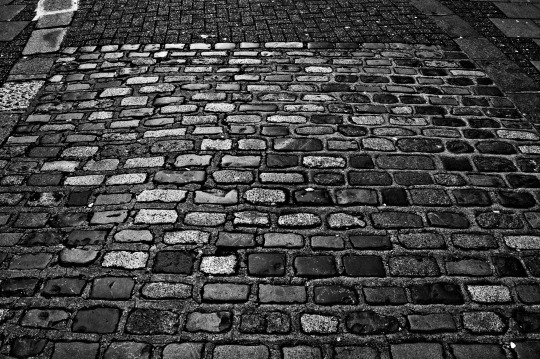#10-18mm
Explore tagged Tumblr posts
Video
Cascades du Sautadet @La Roque-sur-Cèze par Benjamin MOUROT Via Flickr : View in 500px.com/benjamin_mourot
#Sautadet#10-18mm#canon#EOS#70D#Lightroom 5#Benjamin#mourot#gard#languedoc-roussillon#France#Faguo#Francia#Landscape#paysage#view#POV#grand angle#wide angle#Pose longue#long exposure#retardateur#lente#filtre ND1000#ND110#Waterfall#cascade#water#cascada#eau
0 notes
Text
Первые изображения Canon RF-S 10-18mm f/4.5-6.3 IS STM
Вы видите первые фотографии нового объектива Ca... Читать дальше »
0 notes
Text
Sigma presenta il nuovo 10-18mm F2.8 DC DN per mirrorless APS-C
Novità in casa Sigma con la presentazione dell’obiettivo zoom ultra grandangolare Sigma 10-18mm F2.8 DC DN che entra nella famiglia Contemporary ed è disponibile per L-Mount, E-Mount e X-Mount. Come si intuisce dalla sigla, parliamo di una lente zom con un’apertura fissa pari a F2.8, nonostante si scenda nel range degli ultragrandancolari con i suoi 10mm di focale minima (15mm equivalenti con il…

View On WordPress
0 notes
Photo

Untitled
#Cloud#Color#Fujifilm#Fujifilmxseries#SIGMA 10-18mm F2.8 DC DN#Sea#Sigma10-18mm#Sigma1018mm#X-T5#XT5#fujifilm X-T5#カラー#富士フイルム#海#雲
28 notes
·
View notes
Text
Sigma 10-18mm F/2.8 DC DN Contemporary Lens For Fuji X
Explore the Sigma 10-18mm f/2.8 DC DN Contemporary Lens designed specifically for Fujifilm cameras. This high-performance lens offers exceptional image quality, a versatile wide-angle range, and a fast aperture, making it ideal for landscape and architectural photography. Buy Sigma lens in Canada to take advantage of its superior optics at an affordable price. Check out the Sigma lens price in Canada and elevate your photography with this must-have accessory for your Fujifilm system!
#Sigma 10-18mm#buy Sigma 10-18mm#Sigma 10-18mm in canada#buy Sigma 10-18mm in canada#buy sigma lens in canada#photography#Sigma 10-18mm for fuji x#sigma lens for fujifilm#photographers on tumblr#Sigma 10-18mm price#Sigma 10-18mm pirce in canada
0 notes
Text
Sigma Corporation of America: SIGMA Announces 10-18mm F2.8 DC DN | Contemporary, the World's Smallest and Lightest F2.8 Zoom Lens for APS-C Mirrorless Cameras – Press Release

View On WordPress
#"Fujicron" lenses#"Fujilux" lenses#APS-C#Fujicron#Fujifilm#Fujilux#Fujinon#Sigma 10-18mm F2.8 DC DN | Contemporary#Super 35#ultra wide-angle zoom lenses#variable focal length lenses#wideangle zoom lenses
0 notes
Text

Cobbled Together
Nikon D50; 1/100; F/8; ISO 200; 18mm
1/10/2008
1 note
·
View note
Text
southwell workhouse
about southwell workhouse The Southwell Workhouse, is located in Nottinghamshire, and was one of the many workhouses around during the 18th and 19th centuries. These institutions were created as a response to the Poor Law Amendment Act of 1834, which sought to provide relief to the destitute while discouraging dependence on public assistance. what I like about this place hearing how the people…

View On WordPress
1 note
·
View note
Text

Paris, Boulevard des Batignolles, February 2025, canon 550D, efs 18-55mm, 18mm, f4.0, 1/10s
#original photographers#photography#photographers on tumblr#my art#photooftheday#lensblr#paris#paris city#city of paris#filé#panning shoot#paris panning#lumières de la ville#city life#city lights#cityscape#city photography#city streets#urban#streets#urban photography#paris la nuit#paris by night#winter night#night#night photography#night time
57 notes
·
View notes
Text

EXIF: 18mm, f/9, 162 secs, ISO 100. Time: 19:23 on 10 June 2024. Location: Singapore CBD. This is a new spot to me. Visited the third time and finally captured a satisfactory shot. 😃
45 notes
·
View notes
Text
Утечка: первое изображение и спецификации Sigma 10-18mm f/2.8 DC DN | Contemporary
В сети появились первое изображение и характери... Читать дальше »
0 notes
Note
Tânisi!
The largest lizard is the Komodo Dragon, Varanus komodoensis, which can grow to nearly 10 feet and 300 pounds! The smallest lizard is likely Sphaerodactylus ariasae, the Jaragua Dwarf Gecko, adults top out at around 18mm (0.71 inches in freedom units) though some chameleons in the genus Brookesia are just as tiny!
This is me, learning my new lizard facts:

This is me, discovering a festive komodo dragon gif:

And this is me, trying to find a picture of that specific dwarf gecko:

7 notes
·
View notes
Photo

Untitled
#Color#Fujifilm#Fujifilmxseries#SIGMA 10-18mm F2.8 DC DN#Sea#Sigma10-18mm#Sigma1018mm#X-T5#XT5#fujifilm X-T5#カラー#富士フイルム#海
15 notes
·
View notes
Text
Coin of the Day #171 (10/22/2024)
Lightly toned silver for Tuesday…


Roman Empire
AR Denarius - 18mm 3.00g
Diva Faustina I 141 AD
Rome Mint
Obverse DIVA FAVSTINA
Bust of Faustina I right, veiled, draped
Reverse AETERNITAS
Aeternitas standing left, veil blown out in round behind head, holding globe and veil
RIC III 351b
#coin of the day#roman empire#ancient rome#faustina i#faustina the elder#rome#roman coins#coin#coins#numismatics#ancient coins
6 notes
·
View notes
Text
Upgrading My Camera Gear
A few days before the end of the year, I used AI for perhaps the final time to suggest me some equipment to purchase along with what I already have for my camera set up. To recap:
I have a Canon EOS 2000D body and I have 3 lenses to go with it:
Canon 18-55mm
Canon 40mm
Canon EF-S 55-250mm f/4-5.6 IS STM Black Lens
Now, I'd asked ChatGPT to generate me a list of things that I could get to go with it and here's where I got confused.
It's all about lighting
One of the suggestions was to buy an external flash. However, one look at Amazon these days is enough to stress you out with information overload. Amazon once upon a time had a great App design, but now I see so many sponsored products that it's a struggle to know what's genuine. Almost immediately I stumble upon the brand Godox which (Seems to be) is considered the industry best in this respect.
Then I go browsing for reflectors. Again, the suggestion from a few threads I've read seem to suggest the Neewer 5 in 1 which works well for my needs and Amazon sell a stand that would hold the reflectors which I think is a great idea.


Further Confusion
A friend of mine then suggests to me about soft boxes. They weren’t on my list (which is another reason why speaking to a person is better than speaking to an AI). If I’ve understood it, then he’s explained it well.
A soft box helps to project the line, e.g, if you use an external flash, then the soft box projects the light in the shape of the box. A reflector then reflects the light based on the colour of the reflector and plus the angle.
Obvious Conclusion
What I take from all of this is that there will never be a single correct answer here. Instead, it’s about what I want to shoot and what I want to achieve.
Outside Sources
I look to YouTube to try and get the concepts explained to me. The first one I watch highlights how working with a softbox helps to create different light environments.

However, this soft box has the lights built into the device which makes me wonder: why am I buying an external flash?
Then, YouTube recommends this video which is helpful for a myriad of reasons. The main one being that both use refractors, but both handle soft-box lighting in 2 separate ways.

Late night shopping
I have a general rule of thumb. If I don’t understand why I don’t need something, I don’t buy it and that’s the case today. I understand why you would need reflectors but the situation with flash/soft boxes still eludes me. So, with that in mind, I spend a bit of time looking at lenses.
Here is where I think I understand. They have 2 lenses which I like:
Canon EF 50mm
Canon EF-S 10-18mm
One is better for portrait photography, whereas the other is a wide angle lens.
Am I wasting time and effort here?
It occurs to me that whilst I’m spending a lot of time thinking about the means of getting better quality photos into the camera, I should also give some consideration to the editing process of photos.
I go back to a process map that I created a while ago to review my editing stages during my process.
Signs from the universe
On Thursday morning, I load up YouTube and get 3 videos recommended to me which seem to be what I’m looking for:

Immediately after watching this, I realise I’ve been focusing too much on what I don’t have, rather than what I do have. I then move onto the next video

Almost immediately, the creator talks about using a wide shot. This aligns nicely with my intuition. My gut feeling was telling me that I needed to get a wide lens, but I was umming and arring. I also like this second creator, mind you, I like them both. So, I subscribe. Lastly, I get so inspired watching this 3rd video that I pause half way through as my mind is made up.

While I’m walking, I have a ponder about cinematic story telling. You often hear about the 3 acts and this seems to be a general rule of thumb for these videos structures. When I have an idea for a cinematic video, I'll need to practice on writing and building a 3 act structure to tell the story.
While I’m out shopping, the 2nd hand store near me sells the 50mm but not a wide angle lens. Onwards to another shop.
Plot twist
Eventually, I reach the shop I need, but plot twist, they don’t have any lenses whatsoever in stock. Disappointing but it forces me to recalculate. I could use the 18-55 for establishing shots, the 40 for medium shots and then use the 50mm for a close up. So, I head back to the 2nd hand store to buy the 50mm lens.
A Pleasant Surprise
While I’m in the store, I see the 50mm but then I also see a Canon EF-S 10-22mm! Okay now we’re cooking with gas. I’m able to pick up the 50mm and the 10-22mm.
But Wait, there’s more
I notice on the shelf that there is an external flash! Is it compatible with my camera? It is! So, after heading to the supermarket and buying food for the family, I head back to pick it up. I have never used an external flash before so this is a first for me. All that remains now is to test the quality and see what I think.
4 notes
·
View notes
Text
After dark

200mm, Fstop 8, ISO 200, 1s shutter; Center-weighted metering

50mm, F-stop 1.8, ISO 200, 1/50s shutter; Center-weighted metering

18mm, F-stop 20, ISO 200, 20s shutter, Center-weighted metering

55mm, F-stop 16, ISO 200, 4s shutter; Center-weighted metering
Motion Blur

55mm, Fstop 5.6, ISO 200, 1/2.5s Shutter; Matrix metering

55mm, Fstop 11, ISO 200, 2.5s shutter, Matrix metering

55mm, Fstop 11, ISO 200, 2.5s shutter; Matrix metering

18mm, F-stop 22, 10s shutter; Center-weighted metering
3 notes
·
View notes